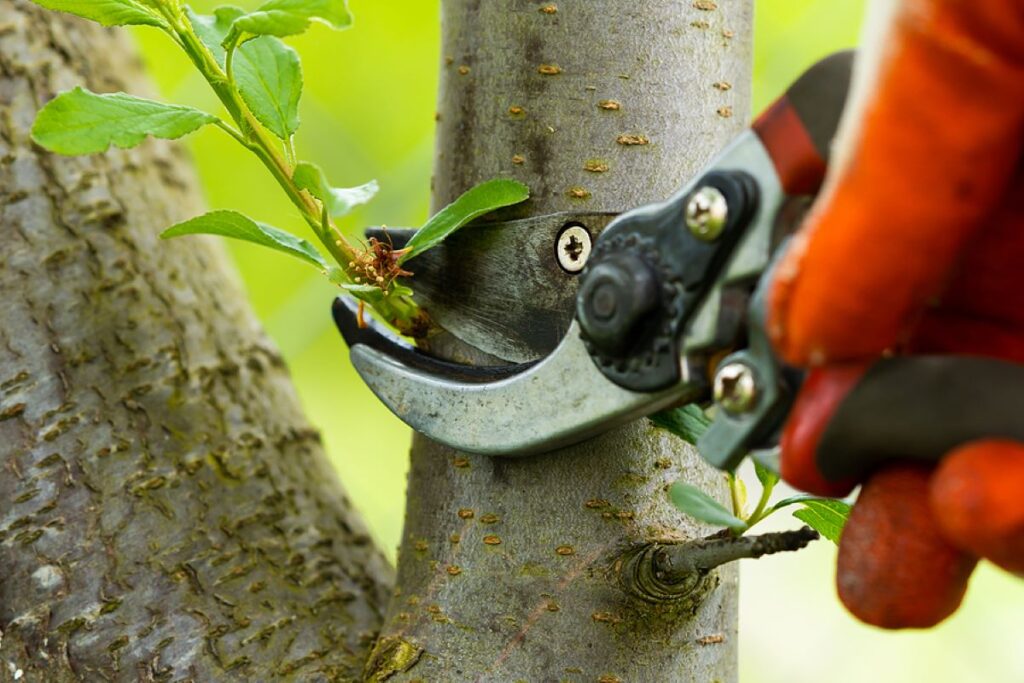Tree pruning is an essential aspect of maintaining a healthy and aesthetically pleasing landscape. Regular pruning not only enhances the beauty of your trees but also promotes their growth and longevity. However, determining how often to schedule tree pruning services can be a complex decision influenced by various factors. This article aims to provide clarity on the frequency of tree pruning and the considerations that come into play.
The Importance of Tree Pruning
Before delving into the specifics of scheduling, it is crucial to understand why tree pruning is necessary. Trees, much like any other living organism, require care and attention to thrive. Pruning involves the selective removal of certain parts of a tree, such as branches and leaves, to improve its health and appearance.
Health Benefits
Regular pruning helps to remove dead or diseased branches, which can be a breeding ground for pests and diseases. By eliminating these problematic areas, the overall health of the tree is enhanced. Furthermore, pruning encourages new growth, allowing the tree to flourish and develop a robust structure. This process also improves air circulation and light penetration within the canopy, which is essential for the photosynthesis that fuels the tree’s growth. Additionally, by shaping the tree properly, you can help prevent structural issues that may arise from weak or poorly positioned branches, ultimately prolonging the tree’s lifespan.
Aesthetic Appeal
In addition to health benefits, tree pruning significantly contributes to the aesthetic value of your landscape. Well-pruned trees can enhance the overall appearance of your garden or property, creating a more inviting environment. This is particularly important for homeowners looking to increase their property value or create a pleasant outdoor space. A well-maintained tree can serve as a focal point in your garden, drawing the eye and providing a sense of harmony with the surrounding flora. Moreover, seasonal pruning can help to showcase the unique characteristics of different tree species, allowing their natural beauty to shine through, whether it be the vibrant blossoms of spring or the striking silhouettes of winter.
Furthermore, the timing and technique of pruning can also influence the tree’s flowering and fruiting patterns. For instance, certain species may benefit from being pruned during their dormant season, while others might require attention just after blooming. Understanding these nuances not only aids in the health of the tree but also enhances the visual spectacle it offers throughout the year. This careful consideration of pruning practices can lead to a thriving ecosystem in your garden, attracting beneficial wildlife such as birds and pollinators, which in turn supports the overall biodiversity of your outdoor space.
Factors Influencing Pruning Frequency
Determining how often to schedule tree pruning services is not a one-size-fits-all approach. Several factors influence the frequency of pruning, including the type of tree, its age, and its growth rate. Understanding these factors can help you make informed decisions about your tree care.
Type of Tree
Different species of trees have varying growth patterns and pruning needs. For instance, deciduous trees, which shed their leaves annually, typically require pruning during their dormant season in late winter or early spring. On the other hand, evergreen trees can be pruned at different times of the year, depending on their growth habits.
Age and Size of the Tree
The age and size of a tree also play a crucial role in determining pruning frequency. Young trees often require more frequent pruning to establish a strong structure and encourage healthy growth. In contrast, mature trees may need less frequent pruning, focusing primarily on removing dead or damaged branches.
Growth Rate
The growth rate of a tree is another significant factor. Fast-growing trees may require pruning every year or every other year, while slower-growing varieties may only need attention every few years. Regular monitoring of your trees can help you identify when pruning is necessary based on their growth patterns.

Recommended Pruning Schedule
While the frequency of tree pruning can vary, there are general guidelines that can help homeowners establish a suitable schedule. These recommendations take into account the factors mentioned above, ensuring that trees receive the care they need without excessive intervention.
Annual Pruning
For many trees, an annual pruning schedule is ideal. This is particularly true for young or fast-growing trees that require regular shaping and maintenance. Annual pruning allows for the removal of any dead or diseased branches while promoting healthy growth. Additionally, it helps maintain the tree’s shape and size, preventing it from becoming overgrown.
Biannual or Triennial Pruning
For mature trees or those that grow at a slower rate, a biannual or triennial pruning schedule may be more appropriate. This allows for the removal of any problematic branches while giving the tree ample time to recover and grow. Homeowners should still monitor these trees regularly to ensure they remain healthy and free of disease.
Special Considerations
Certain situations may warrant more frequent pruning. For example, trees that are located near power lines or structures may require more regular attention to prevent hazards. Additionally, trees that have been affected by storms or pests may need immediate pruning to address any damage or risk to their health. Want to get about What Is Stump Grinding and How Does It Work? visit https://innovationsuk.com/what-is-stump-grinding-and-how-does-it-work/
Signs That Your Trees Need Pruning
Understanding when to schedule tree pruning services can be just as important as knowing how often to do so. There are several signs that indicate a tree may need pruning, and recognising these can help maintain its health and safety.
Dead or Diseased Branches
One of the most obvious signs that a tree requires pruning is the presence of dead or diseased branches. These branches can pose a risk to the overall health of the tree and may also become a hazard if they fall. Regular inspections can help identify these issues early, allowing for timely intervention.
Overgrowth
If a tree has become overgrown, it may interfere with nearby structures, power lines, or other plants. In such cases, pruning can help restore balance and ensure that the tree does not encroach on its surroundings. An overgrown tree may also struggle to receive adequate sunlight and air circulation, which can hinder its growth.
Unusual Growth Patterns
Sometimes, trees may exhibit unusual growth patterns, such as crossing branches or excessive growth in one direction. These irregularities can lead to structural weaknesses and should be addressed promptly. Pruning can help correct these issues, promoting a healthier and more balanced tree.
The Role of Professional Tree Pruning Services
While some homeowners may feel confident in their ability to prune their trees, enlisting the help of professional tree pruning services sydney can offer several advantages. Professionals have the expertise and equipment necessary to perform the job safely and effectively.
Expertise and Knowledge
Professional arborists possess extensive knowledge about tree species, growth patterns, and proper pruning techniques. This expertise ensures that trees are pruned correctly, minimising the risk of damage and promoting healthy growth. Additionally, professionals can identify potential issues that may not be apparent to the untrained eye.
Safety Considerations
Tree pruning can be a hazardous task, particularly when dealing with large or tall trees. Professionals are equipped with the necessary tools and safety gear to perform the job safely. They are trained to assess risks and take the appropriate precautions, ensuring that both the tree and surrounding areas remain safe during the pruning process.

Long-term Care
Engaging professional tree pruning services can also lead to better long-term care for your trees. Arborists can provide ongoing maintenance and advice, helping homeowners establish a comprehensive tree care plan. This proactive approach can lead to healthier trees and a more beautiful landscape over time.
Conclusion
Scheduling tree pruning services is an essential aspect of maintaining a healthy and attractive landscape. The frequency of pruning will depend on various factors, including the type of tree, its age, size, and growth rate. By understanding these factors and recognising the signs that indicate a need for pruning, homeowners can make informed decisions about their tree care.
While an annual pruning schedule is often suitable for many trees, others may require less frequent attention. Engaging professional tree pruning services can further enhance the health and longevity of your trees, ensuring they remain a valuable asset to your property.
Ultimately, regular tree pruning not only contributes to the health and beauty of your landscape but also enhances the safety and value of your property. By prioritising tree care, homeowners can enjoy the many benefits that well-maintained trees provide.
